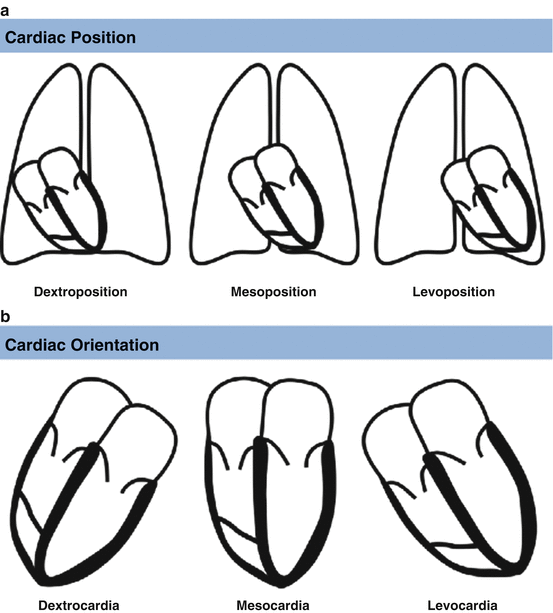HETEROTAXY SYNDROMES
What is situs solitus?
In situs solitus the viscera are in their normal positions (stomach and spleen on the left, liver on the right), the 3-lobed right lung is on the right, and the 2-lobed left lung on the left;the right atrium is on the right, and the left atrium is on the left.
What is situs inversus?
The mirror image of situs solitus, in which there is a reversal of placement of the abdominal and thoracic structures resulting in a left-sided liver, right-sided stomach, left-sided IVC, right atria on the left side, and the left atria on the right side.
With this arrangement, concordance among organs, vessels, and cardiac components is generally conserved.

What is heterotaxy?
Heterotaxy, derived from Greek (hetero, meaning "different," and taxy, meaning "arrangement"), is also referred to as visceral heterotaxy or heterotaxy syndrome. It is defined as an abnormal arrangement of the internal thoracic-abdominal organs across the left-right axis of the body.
What is situs ambiguous or indeterminus?
Situs ambiguus is defined as abnormal arrangements of abdominal and thoracic organs that do not include situs inversus. Most cases of situs ambiguus are due to heterotaxy.
What is isomerism?
In a normal human body there is asymmetry of the thoracic and abdominal organs which gets lost in heterotaxy.
This causes unusual degree of symmetry of organs and veins.
The term "isomerism," derived from Greek (iso, meaning "equal," and meros, meaning "part"), refers to this abnormal developmental symmetry in which morphologic structures that normally develop on one side are found on both sides of the body and is the currently accepted term used to describe hearts with isomeric atria and atrial appendages.
So, in affected patients, instead of distinct left and right sides, individuals with isomerism will have either two right sides or two left sides resulting in either two right atria or two left atria (atrial isomerism).
What are the variations of heterotaxy?
There are 2 major variations
Asplenia syndrome - Right isomerism or bilateral right sidedness
Polysplenia syndrome - left isomerism or bilateral left sidedness
What are the differences between asplenia and polysplenia syndrome?
 |
| Left sided isomerism |
What can be the cause of heterotaxy ?
Human heterotaxia syndromes may be related to disorders in cilia and in utero left-right axis development. Genes involved in the Nodal signaling pathway,including NODAL (known asymmetric gene).
What is ventricular inversion?
It is a condition in which the anatomic right ventricle of the heart is on the left side of the interventricular septum and the anatomic left ventricle is on the right. In this case, in the presence of situs solitus, the right atrium connects with the left ventricle and the left atrium with the right ventricle.
It results from l-looping of embryonic cardiac tube.
What is dextrocardia and levocardia?
Dextrocardia occurs when the heart is in the right side of the chest. Levocardia (the normal situation) is present when the heart is in the left side of the chest.
What is dextroposition?
Anatomic or functional abnormalities of the lungs, diaphragm, and thoracic cage may result in displacement of the heart to the right (dextroposition ). In this case, however, the cardiac apex is pointed normally to the left.




Comments
Post a Comment